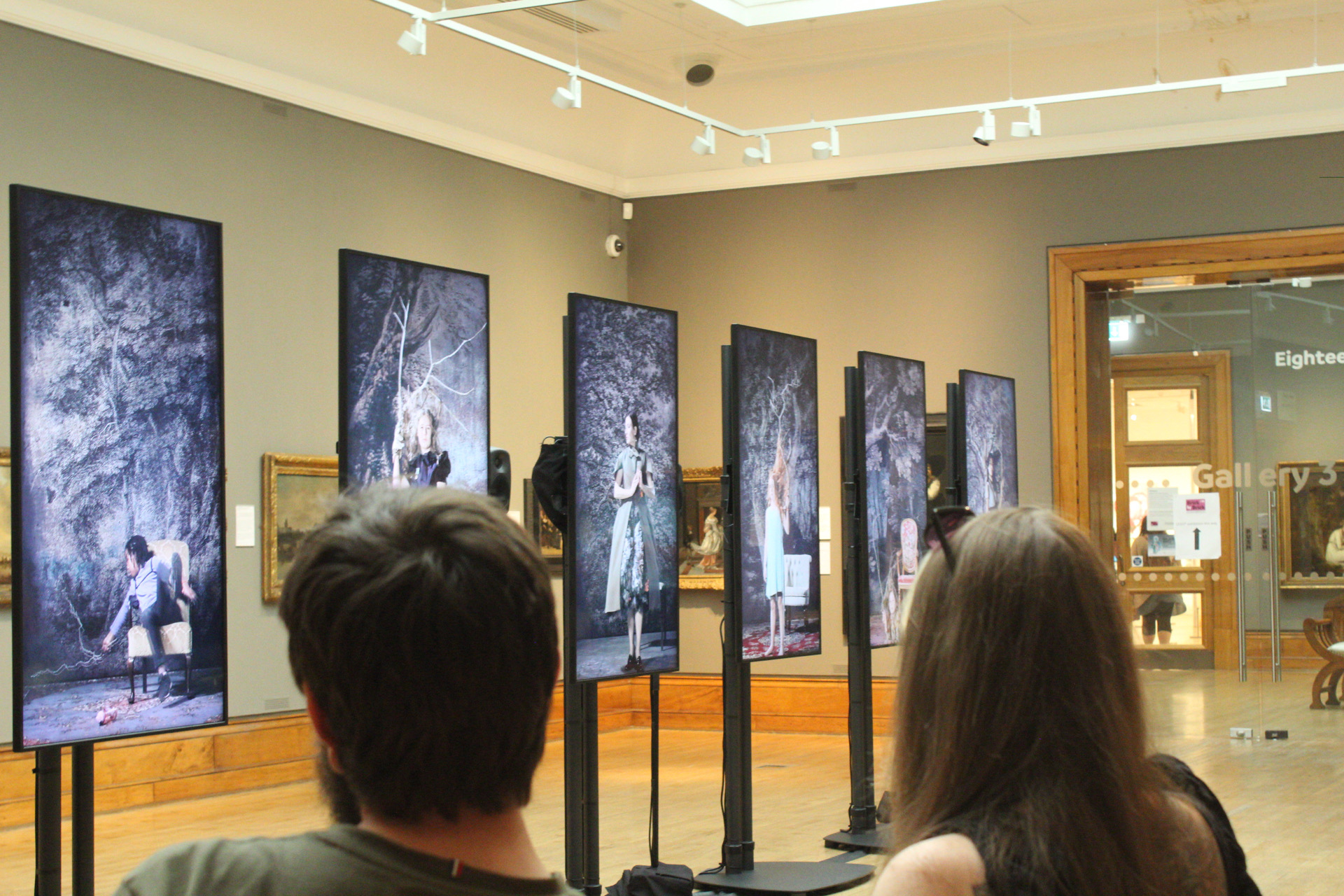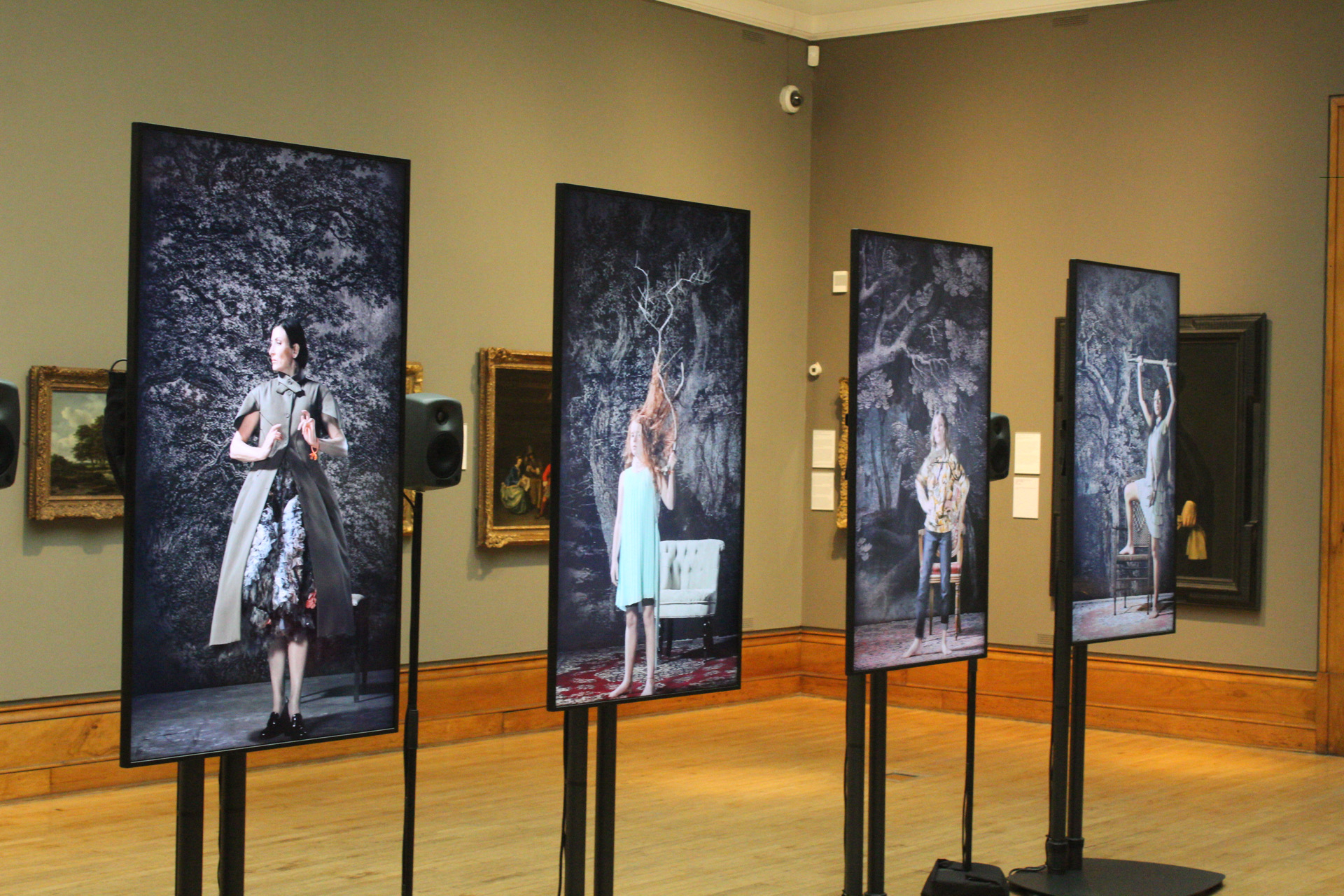
Lucy: “So I suppose you kind of gave them a brief of kind of what you wanted, and said, ‘Look, take it your own way’?”
Dudley: “Totally.”
Lucy: “So considering that, I want to know how you selected the girls? There’s such a great range of them!”
Dudley: “Yes completely! I didn’t want show kids, it wasn’t about auditions, it really was the girls that are daughters are friends, that I've just seen growing up, and all of them in very different ways have really inspired me. I mean, they’re from all over the place because I travel a lot so there's one girl, Kittu, who's my best friends’ daughter - she’s the eldest one - and so I’ve known her since she was a baby. My niece is in there, as well as daughters of colleagues or daughters of friends, so they're all girls that I’ve seen growing up which helped a lot because it means that they trusted me and we could speak quite openly. And that was so important because with this subject matter and because the filming was so intense - because it's just one on one and there's one person there being filmed with a crew - they had to feel comfortable, and they had to come to us to say if they didn't agree with something or they didn’t understand. So it was important that we felt comfortable with each other and they felt comfortable with me.”
Lucy: “So you had to build a relationship with them rather than just say you know, ‘I want you to do this’ or ‘I want you to do that’?”
Dudley: “Yeah yeah completely.”
Lucy: “So with feminism being the central focus on the piece why did you decide that it was gonna be the most integral part of this? And what does feminism mean to you?”
Dudley: “Gosh, what does it mean to me? You see that’s a funny question you know because its just one of those things like it's essential. It’s one of those things that to me is just as essential as breathing, so it’s almost like being asked, ‘Well what does oxygen mean to you?’ I just think it’s humanity, and it's treating people with respect - it’s the same with race and equality for all genders. It’s just essential to living and even if you don't agree with it initially, you’re gonna have to agree with it at some point otherwise you're gonna have a very difficult life.”
Lucy: “I love the work that you've done with young people as well, inspiring those females to create and do things like that must have been so daunting for the girls but so exciting as well.”
Dudley: “Yeah it was so nice! I think the last piece I'd done just before that was the one with William, on world War one and was very much about male soldiers and there was a lot of screaming over a lot of noise and I was really enjoying working with this project. Whereas with this project it was so lovely to work with just one person in a very quiet way and it wasn't a big film team and it was really about making sure that the girls felt literally like queens for the whole time, so whatever they wanted, they’d be looked after. The costume designer is a good friend of mine - he just treated them like absolute queens - so, I think most of the time, and there was some tense moments sometimes because it was exhausting, but the focus was entirely on them feeling good.”
Lucy: “How did you decide on costumes with the costume designer? Obviously, there’s this fantastic dress that you wear throughout the duration of the piece, but how did you decide on what the girls were going to wear too?”
Dudley: “Well we called it the War Dress, and we liked this idea that it could almost be like an animal in itself you know, sort like this weird that comes alive! And the costume designer, he works for Prada now but he worked for Dior at that point and he was working for the men's collection, and it was really interesting because with Dior there’s this whole history - especially in the women’s wear - of it being influenced by military wear and that was because when Dior started with his first collections it was just after the war. So that's all that was available at the time, and strangely enough the fashion was sort of influenced by uniforms. So it was really useful that he had that background knowledge behind him, and it was also fantastic because he had the Dior seamstresses to work on the dress but that history was quite important as well. And even though the dress is quite out there, the detail behind the way it’s structured is quite Dior in some ways, but it is out there because it's really a symbol of anarchy and of a creature being let out and taking over. And with the girls, I wanted them to really be wearing clothes that we believed that they’d be wearing every day, and then there was this whole idea - which is also slightly Dior influenced I suppose - we call it belting up where the customer would develop in regards to medals that they had or several belts or lifesaving jackets. So it was that sense of belting up and preparing for a BIG step and taking over and bringing it into our own hands and into the new world.”
Lucy: “Honestly the whole installation is so captivating, and I really got that sense from watching it that it was the girls preparing for the revolution. So just to round up, what do you want audiences to take from this piece?”
Dudley: “I think that with young people, I want them to see that there’s so much strength there. I think that - not that we should stop trying - but we should really trust and give these people a chance to actually do something new. To really question, also when you walk through this museum and other museums alike, the way women and girls have been represented because it’s still really bad, and the fact that we’re still talking about this is really quite bizarre and that does really need to be looked at, and women need to be represented more. And it’s not only women of course because, you know, we’re in a much more complex world right now and it’s so much more interesting with the gender fluidity, but my piece it is about women actually, but I mean that for everybody. We do have to be looking at this properly and asking these questions surrounding representation and making change.”
Words and Images by Lucy Tessier

